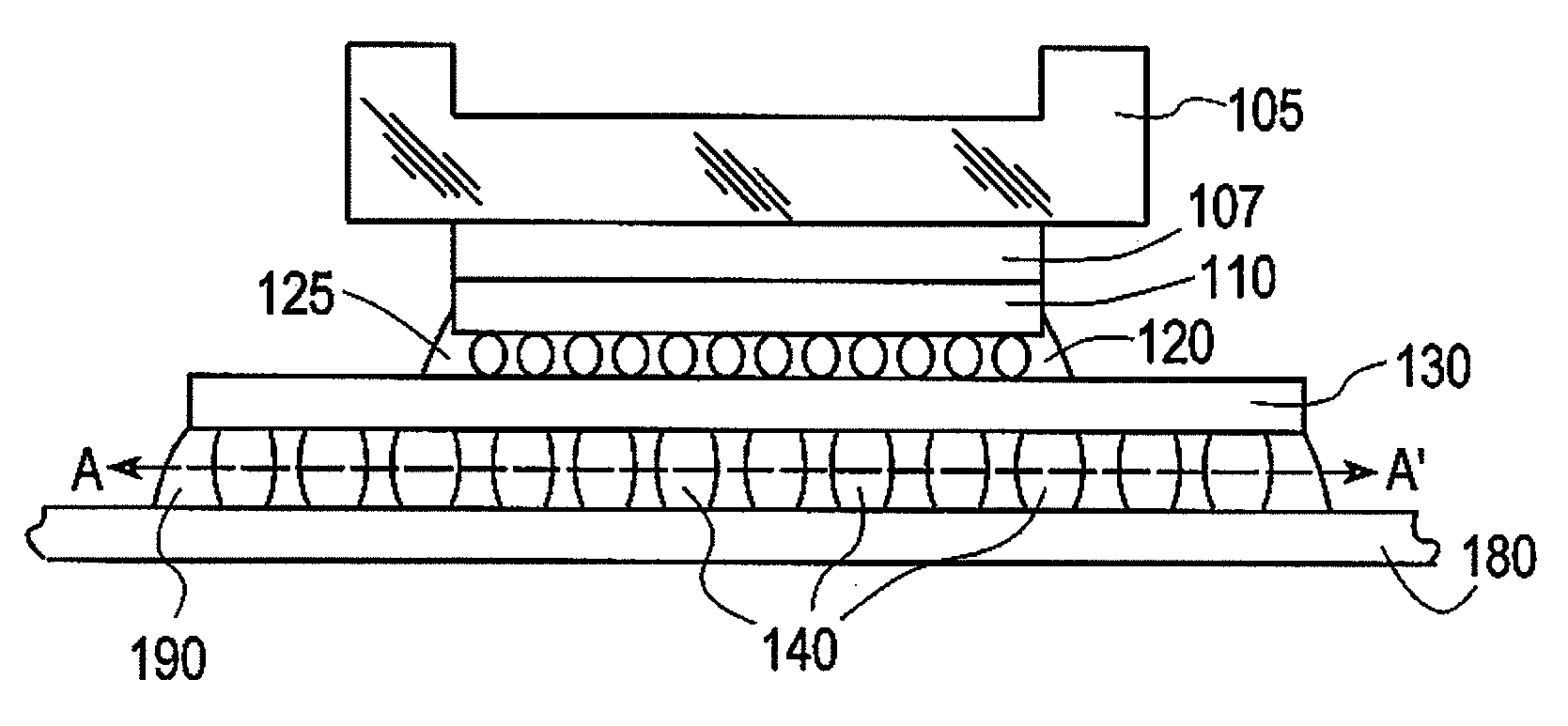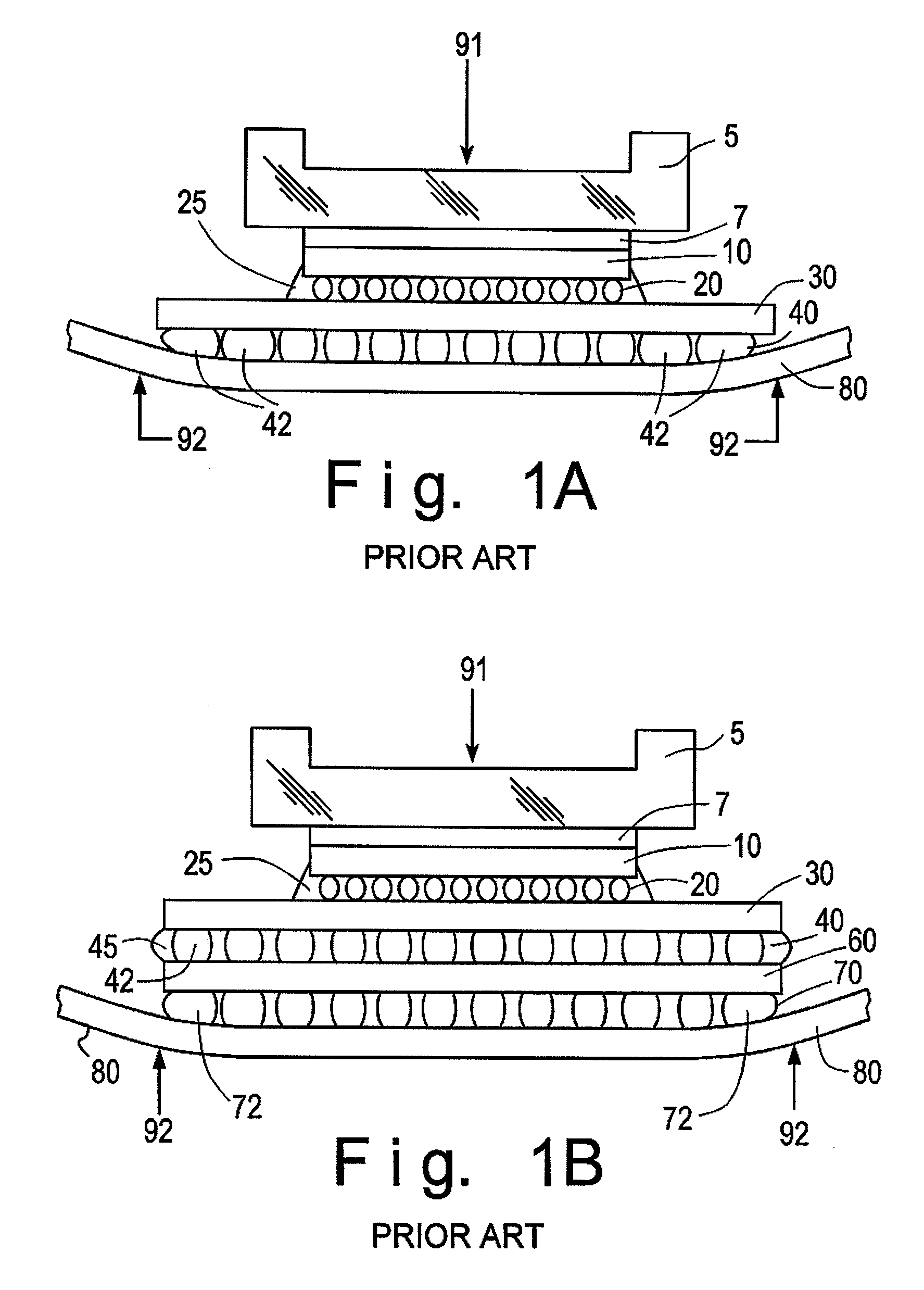Solder interconnection array with optimal mechanical integrity
a technology of interconnection array and solder ball, which is applied in the direction of sustainable manufacturing/processing, semiconductor/solid-state device details, and final product manufacturing, etc., can solve the problems of reducing the reliability of thermo-mechanical fatigue (tmf), affecting the integrity of the interconnection, and affecting the interconnection structure. , to achieve the effect of facilitating the joining of the substra
- Summary
- Abstract
- Description
- Claims
- Application Information
AI Technical Summary
Benefits of technology
Problems solved by technology
Method used
Image
Examples
Embodiment Construction
(s)
[0050]In describing the preferred embodiment of the present invention, reference will be made herein to FIGS. 2-15 of the drawings in which like numerals refer to like features of the invention.
[0051]Referring to FIG. 2, an electronic module is shown that includes a chip 110 mounted on a substrate or chip carrier 130 by known mounting means, such as a solder interconnection grid array 120, e.g., C4 connections 120. A chip underfill material 125 encapsulates at least a portion, and preferably all, of the C4 connections 120 to improve the solder ball fatigue reliability and to provide an effective barrier against environmental and process exposures. This chip underfill material 125 may include any known underfill material for encapsulating solder interconnections between a chip and a substrate. The substrate 130 may comprise a ceramic substrate, an organic substrate, a silicon substrate or a variety of other known substrate materials.
[0052]Once the chip is joined to the chip carrie...
PUM
| Property | Measurement | Unit |
|---|---|---|
| particle size | aaaaa | aaaaa |
| diameter | aaaaa | aaaaa |
| viscosity | aaaaa | aaaaa |
Abstract
Description
Claims
Application Information
 Login to View More
Login to View More - R&D
- Intellectual Property
- Life Sciences
- Materials
- Tech Scout
- Unparalleled Data Quality
- Higher Quality Content
- 60% Fewer Hallucinations
Browse by: Latest US Patents, China's latest patents, Technical Efficacy Thesaurus, Application Domain, Technology Topic, Popular Technical Reports.
© 2025 PatSnap. All rights reserved.Legal|Privacy policy|Modern Slavery Act Transparency Statement|Sitemap|About US| Contact US: help@patsnap.com



